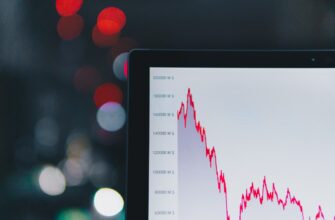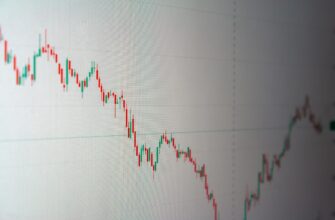- What is Bitcoin Halving? The Complete Guide to Crypto’s Supply Shock Event
- What Exactly is Bitcoin Halving?
- How Bitcoin Halving Works: The Technical Mechanics
- Historical Bitcoin Halving Events and Market Impact
- Why Bitcoin Halving Matters: 3 Critical Implications
- What to Expect in the 2024 Bitcoin Halving
- Bitcoin Halving FAQ: Your Questions Answered
- How often does Bitcoin halving occur?
- Will Bitcoin halving make the price go up?
- What happens to miners after halving?
- How many halvings are left?
- Does halving affect other cryptocurrencies?
What is Bitcoin Halving? The Complete Guide to Crypto’s Supply Shock Event
Bitcoin halving is one of the most anticipated events in cryptocurrency, fundamentally reshaping Bitcoin’s economics every four years. This pre-programmed supply shock cuts new Bitcoin creation in half, creating scarcity that historically triggers major market movements. With the next halving expected in April 2024, understanding this mechanism is crucial for any crypto enthusiast. This guide breaks down everything from the technical basics to historical impacts and future implications.
What Exactly is Bitcoin Halving?
Bitcoin halving is a scheduled event embedded in Bitcoin’s code that reduces the block reward miners receive by 50%. Occurring approximately every four years (or every 210,000 blocks), it’s Bitcoin’s built-in mechanism to control inflation and enforce digital scarcity. Unlike fiat currencies that central banks can print indefinitely, Bitcoin has a fixed supply capped at 21 million coins. Halvings ensure this limit is reached gradually by slowing new coin issuance until the last Bitcoin is mined around 2140.
How Bitcoin Halving Works: The Technical Mechanics
The halving process revolves around Bitcoin’s proof-of-work consensus mechanism:
- Block Rewards: Miners validate transactions and add new blocks to the blockchain, earning newly minted Bitcoin as compensation.
- The 50% Cut: At each halving, the per-block coin emission drops geometrically (e.g., 6.25 BTC → 3.125 BTC in 2024).
- Fixed Schedule: Halvings occur precisely every 210,000 blocks – roughly every four years – with countdowns tracked in real-time by the crypto community.
- Supply Cap Enforcement: This deflationary model ensures only 21 million BTC will ever exist, with over 19.5 million already mined.
Historical Bitcoin Halving Events and Market Impact
Past halvings demonstrate clear patterns of supply-driven price appreciation:
- 2012 Halving: Reward dropped from 50 to 25 BTC. Bitcoin surged from $12 to $1,100 within a year.
- 2016 Halving: Reward fell from 25 to 12.5 BTC. Price climbed from $650 to $20,000 by late 2017.
- 2020 Halving: Reward decreased from 12.5 to 6.25 BTC. Despite pandemic chaos, BTC rallied from $9,000 to $69,000 in 18 months.
While past performance doesn’t guarantee future results, these events consistently triggered bull markets after initial volatility as markets adjusted to reduced sell pressure from miners.
Why Bitcoin Halving Matters: 3 Critical Implications
Halvings create ripple effects across the crypto ecosystem:
- Supply Shock: Fewer new coins enter circulation daily, increasing scarcity if demand remains constant or grows.
- Miner Economics: Mining profitability drops overnight, forcing inefficient operations offline and potentially increasing network centralization temporarily.
- Market Psychology: Halvings generate massive media attention, drawing new investors and often creating self-fulfilling bullish prophecies.
What to Expect in the 2024 Bitcoin Halving
The next halving (estimated April 2024) will slash rewards from 6.25 to 3.125 BTC per block. Key considerations:
- Daily new supply drops from 900 BTC to 450 BTC – equivalent to constant daily sell pressure of ~$20M vanishing at current prices.
- Increased institutional adoption through Bitcoin ETFs may amplify demand-side pressure.
- Potential short-term miner capitulation could cause volatility, but network difficulty adjustments typically restore equilibrium within weeks.
Bitcoin Halving FAQ: Your Questions Answered
How often does Bitcoin halving occur?
Approximately every four years, or after every 210,000 blocks are mined. The exact date depends on block production speed but is highly predictable within weeks.
Will Bitcoin halving make the price go up?
Historically yes, but not immediately. Price surges typically occur 6-18 months post-halving as reduced supply meets growing demand. Short-term effects can be volatile.
What happens to miners after halving?
Miners face 50% lower revenue overnight. Efficient operations with cheap electricity survive, while others shut down temporarily. Network hashrate usually recovers within months as difficulty adjusts.
How many halvings are left?
There will be 32 total halvings. After the 2024 event, five more will occur until block rewards reach zero around 2140, after which miners will earn solely from transaction fees.
Does halving affect other cryptocurrencies?
Yes. Many Bitcoin forks (like Bitcoin Cash) share its halving schedule. Major altcoins often experience correlated price movements due to Bitcoin’s market dominance.
Bitcoin halving remains crypto’s most significant scheduled economic event – a fascinating experiment in digital scarcity that continues to shape the future of finance. By understanding its mechanics and historical context, investors can better navigate the opportunities and challenges ahead.








